The Maya Train Route: Everything You Need to Know
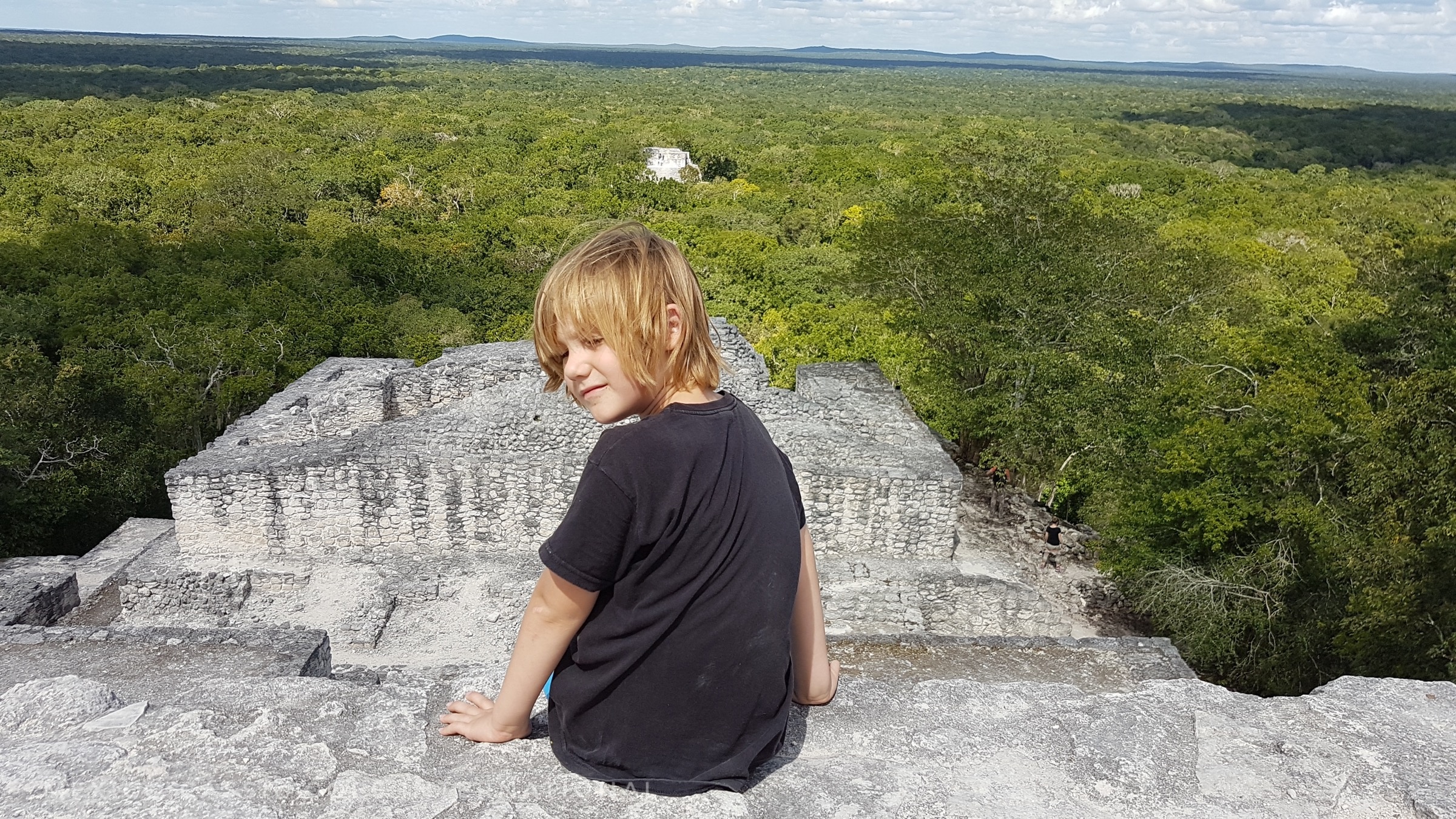
The brand new Maya train route looks as if it will be ready to host visitors some time in early 2024. The route will showcase the best of southern Mexico as it weaves history, culture and nature together along its 1,500km of track between cities, along the Caribbean Coast and deep into the dense jungle of southern Mexico.
When fully operational, the Tren Maya Project will shuttle passengers around the five most southern Mexican states of chiap, Tabasco, Campeche, Yucatán and Quintana Róo, linking major tourist sites and cities such as Chichén Itzá, Cancun, Bacalar, Mérida and Palenque.
In order to help you figure out if the Maya Train – Tren Maya in Spanish – is something you need/want to experience this article will cover the following:
📌 Who can enjoy the Maya train route? | 📌 The Maya train route and its highlights | 📌 How to buy Tickets | 📌 Train services | 📌 Best time to visit Southern Mexico
⭐️ I will also offer suggested blog posts to help you plan what to see and do, how to get around and where to stay at every stop of your exciting Mayan train adventure ⭐️
Who Can Enjoy the Maya Train Route?
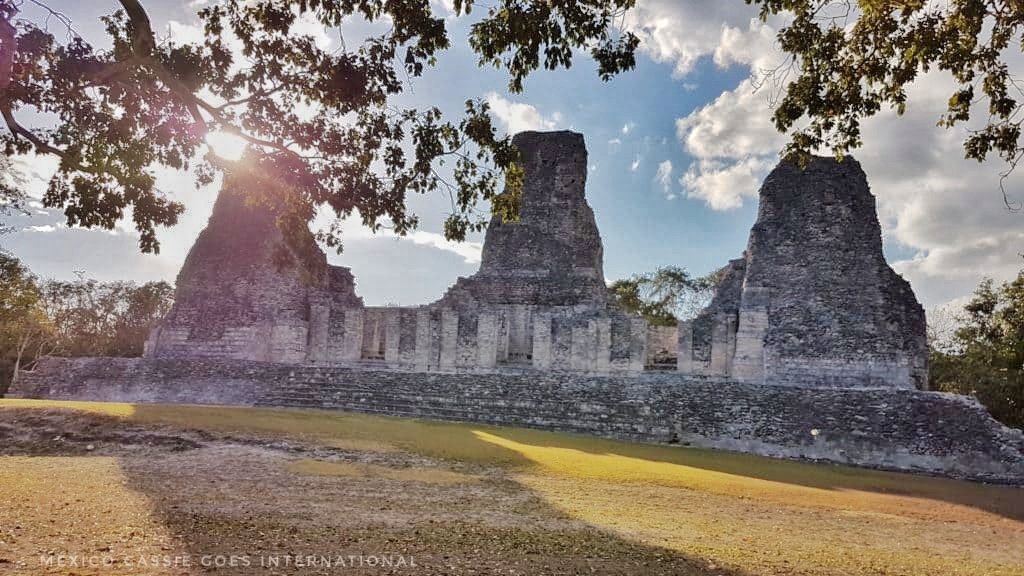
There are affiliate links in this article. If you click and make a purchase I could make a small sum at zero cost to you. Thank you!
The Maya train is ostensibly for everyone: the route consists of trains serving the needs of both tourists and locals.
🚉 Train Stations (ESTACIONES) – the stations will be located at the tourist destinations
🚉 Stops (PARADAS) – the stops are for more local travel, offering locals easier travel around their home region
If you are interested in historical sites, cultural heritage, pristine beaches and natural beauty then for sure you are going to find plenty to enjoy as you travel around the complete route of the Mayan train.
♿️ It is said that trains will be accessible for people with limited mobility and that there will be space for wheelchairs aboard the trains. What this will look like in reality for travelers, I don’t know, especially since many of the archaeological sites are not currently particularly wheelchair friendly.
🐾 According to the Tren Maya website, certified service and emotional support dogs are permitted on the train, as are small dogs/cats (weighing under 10kg) but I highly recommend verifying this before buying your tickets.
The Mayan Train Route – the Details
The Maya Train Route Will Give Visitors Access to
⭐️ 23 Pueblos Magicos (Magical Towns – seven of which are actual stops along the route)
⭐️ 5 of the stations are in big cities and offer access to more
⭐️ 6 UNESCO World Heritage sites – including Chichén Itzá and the city of Campeche
⭐️ 5 Protected natural areas – each of the five states through which the train runs is home to protected areas such as Calakmul Biosphere Reserve in Campeche and El Triunfo Biosphere Reserve in Chiapas
⭐️ 50+ Archaeological zones – from the Mayan and Olmec civilisations including world famous ones such as Palenque, Tulum and Chichén Itzá to magificent smaller and almost unheard of sites like Xcambo, Aké and Becán
⭐️ Numerous beautiful beaches across Tabasco, Campeche, Yucatán and Quintana Roo
⭐️ Hundreds of cenotes, primarily in Yucatán and Quintana Roo
➡️ The high-speed train used along these routes will be capable of traveling at a maximum speed of 160 km / hour, reducing travel time between popular destinations. Imagine Cancun to Mérida in just 90 minutes rather than the current four hours by road.
➡️ The Maya Train project, as well as creating this train route across the south of Mexico will also include six luxury hotels and two ecological parks. The hotels will all be located near archaeological sites in order to facilitate their access. The hotels will be in Palenque, Chichén Itzá (Piste), Uxmal, Edzna, Calakmul and Tulum.
✈️ Best airports to use to reach the Maya train stations are Cancun International Airport, Mérida International Airport and the new but not yet complete, Tulum International Airport.
🚌 If you wish to use public buses for day trips or instead of trains, this is also possible. You can check timetables in Spanish or English.
🚗 It may be that you take the train for some stops but feel like renting a car for other sections of your trip. Most of this region is extremely easy and safe for road trips. I have driven around the entire Maya train route at various times and never once felt unsafe.
However you travel and explore, don’t forget to take out travel insurance before you go.
Maya Train Route – Stations and Stops
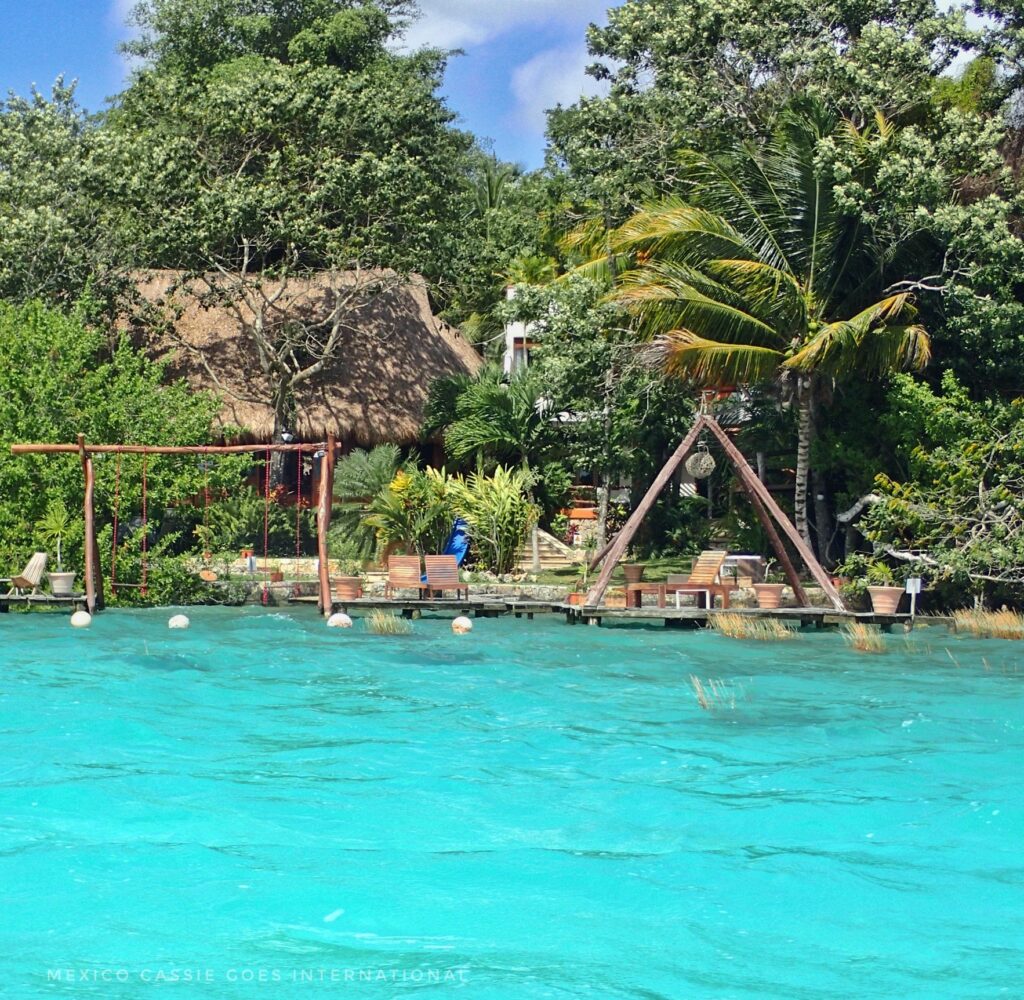
The Maya train route is expected to have 20 stations and around 16 stops across the five states and three routes.
➡️ Caribbean Route: linking the cities of Quintana Róo’s Riviera Maya, from Cancun in the north to Chetumal and Bacalar in the south
➡️ Gulf Route / Inland Route: linking Cancun with Yucatecan cities and heading down to Campeche City in Campeche State
➡️ Jungle Route: linking Palenque in Chiapas with Chetumal via the Campeche jungle ruins in the astounding Calakmul biosphere reserve
📌 Let’s take a look at how the specific route sections have been broken down. Some are much longer than others, I guess over those short sections such as Playa del Carmen to Tulum, the hope is that if tourists use the train it will reduce some of the congestion on the roads.
Section 1: Palenque – Escárcega (228 km)
Stations – Palenque, Boca del Cerro, El Triunfo, Escárcega
Stops – Tenosique and Candelaria
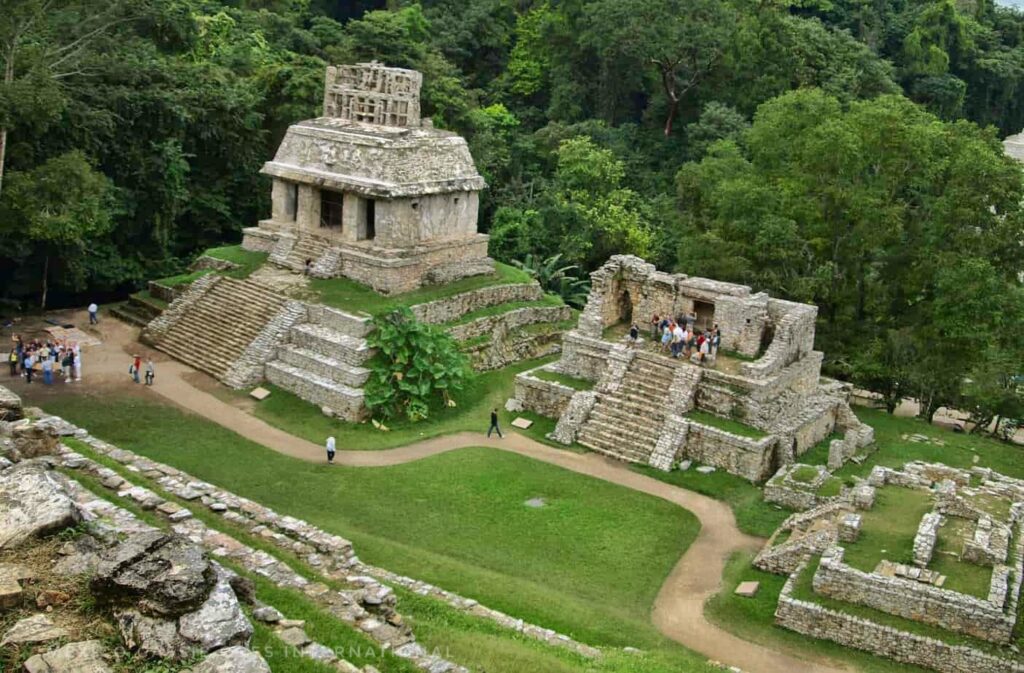
✅ Highlights – the incredible archaeological site of Palenque, Pantanos de Centla Biosphere (one of the biggest wetland areas in all of Mexico) as well the Usumacinta Canyon. From Boca del Cerro it’s also possible to visit Yaxchilán, an ancient Mayan ruin on the banks of the Río Usumacinta along the border with Guatemala (which I visited on my honeymoon in 2009).
✅ It’s also possible to visit the Agua Azules waterfalls and Palenque national park from Palenque town.
Recommended Reading
Section 2: Escárcega – Calkiní (235 km)
Stations – Escárcega, Edzna, Campeche
Stops – Carrillo Puerto, Tenabo, Hecelchakán, Calkiní
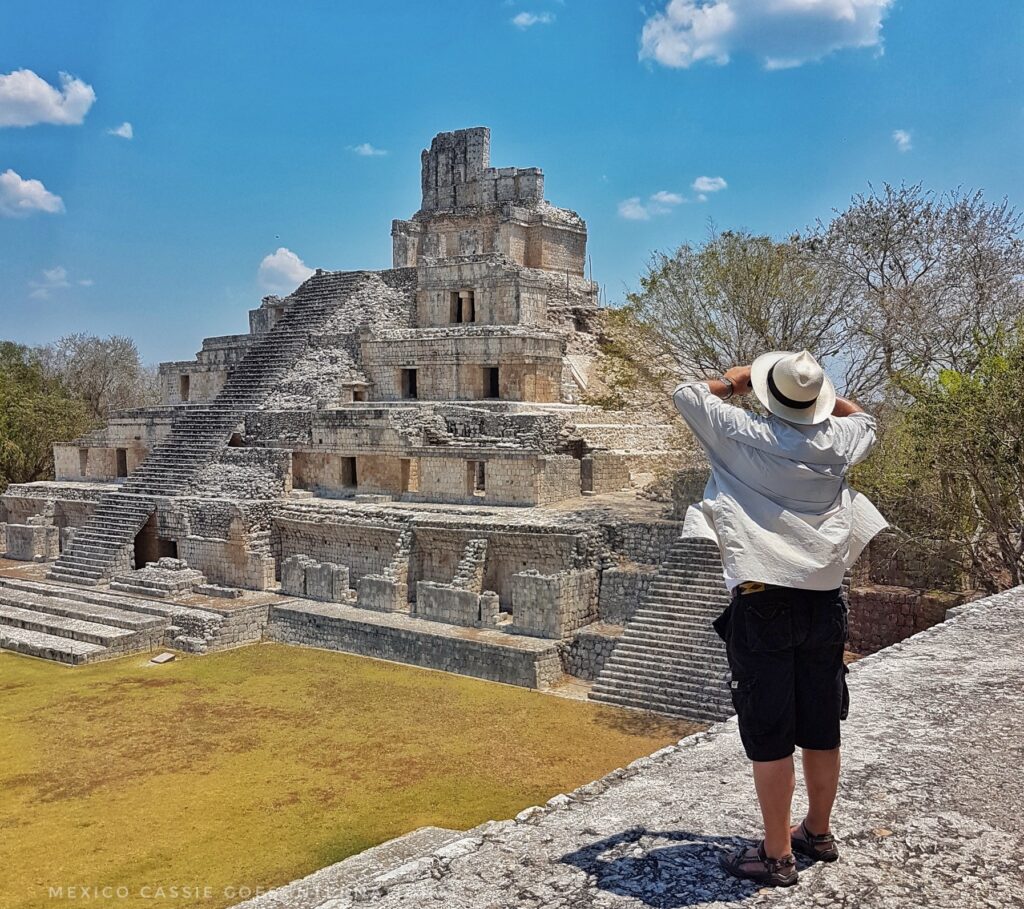
✅ Highlights – the Maya ruin of Edzna and the small colonial city of Campeche. If you’re only taking the Maya train on this side of the peninsula then use Escárcega as your base to visit the Calakmul Biosphere Reserve and ruins.
Section 3: Calkiní – Izamal (172 km)
Stations – Mérida airport, Teya, Izamal
Stops – Maxcanú, Tixkokob
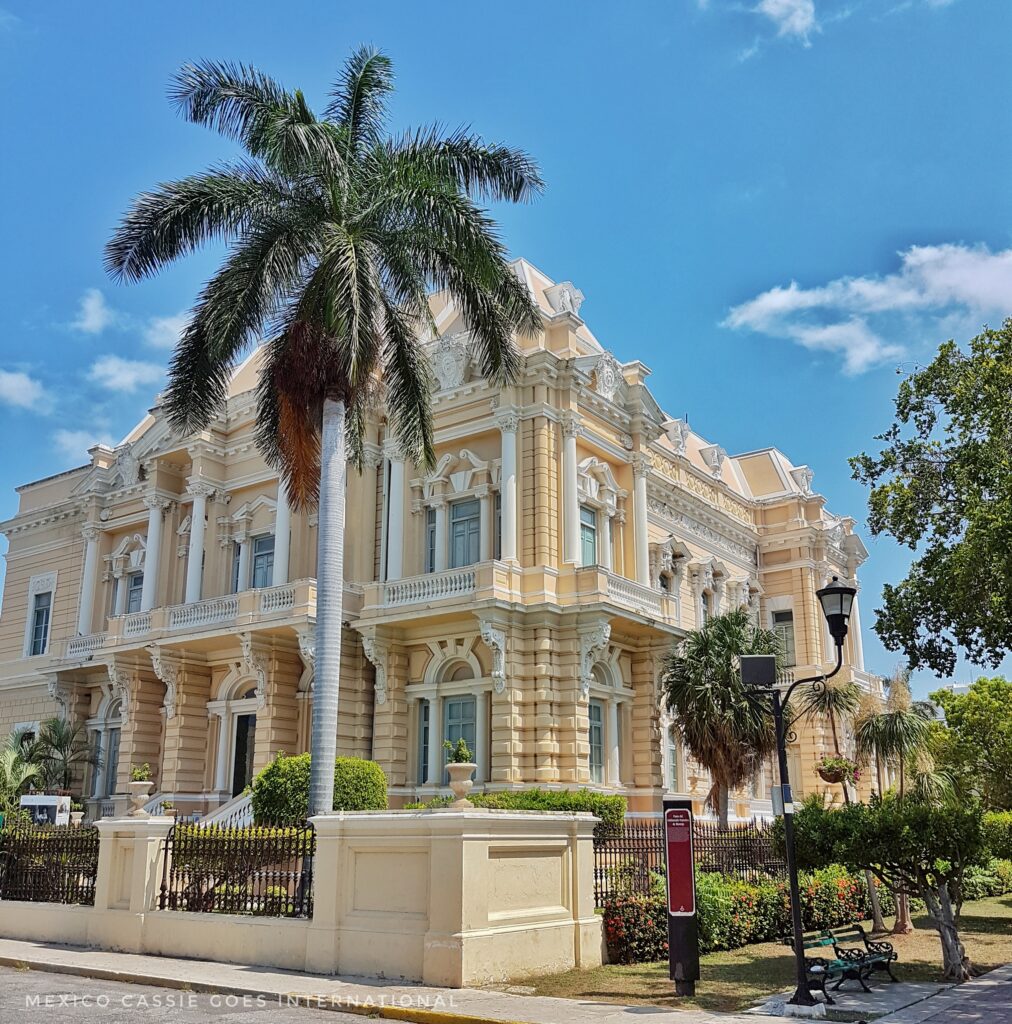
✅ Highlights – the incredible colonial architecture of the city of Mérida is a big draw for many. This beautiful city is full of culture and magic and is one of the most popular destinations in Yucatán. It is a perfect base for exploring the region including the beaches of the Gulf of Mexico’s gentle Costa Esmerelda and the cenotes that are all around Yucatán.
✅ Izamal, the yellow city (and pueblo magico) is a fascinating old city that is also an instagrammer’s dream since almost all the buildings in the city center have been painted yellow. There are pyramids and ruins aplenty to explore here.
Recommended Reading
Note: it has also be suggested that at some point in the future there will be an extension of the line to Progreso, which would make sense given that it’s a major cruise ship port.
📍 Electric trains or trams are planned to shuttle people from the Mérida station at Uman to a more central station at La Plancha in Mérida.
Section 4: Izamal – Cancun (257 km)
Stations – Chichén Itzá, Valladolid, Nuevo Xcan, Cancun airport
Stops – Xibalbá, Leona Vicario
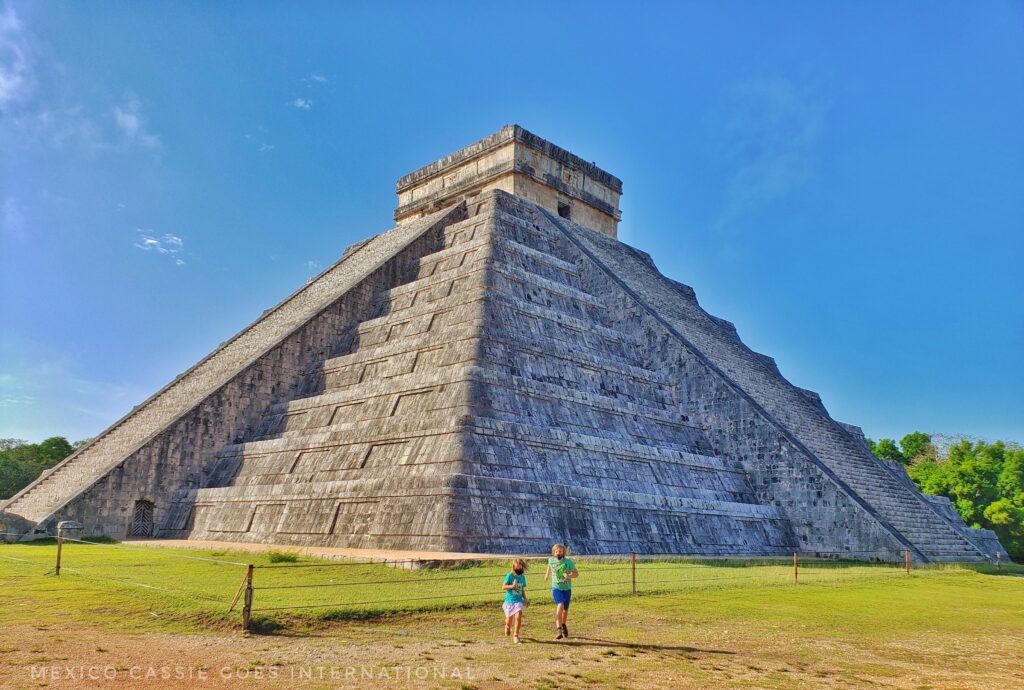
✅ Highlights – Mayan ruins of Chichén Itzá, Ek Balam and Coba and the city of Valladolid
✅ Valladolid is located halfway between Cancun and Mérida making it an excellent stopping point as visitors explore the Yucatan Peninsula. There are dozens of fabulous cenotes around Valladolid and it’s the perfect spot from which to explore the UNESCO World Heritage Site of Chichen Itza, Ek Balam and Coba.
❓ Are you wondering whether to visit Mérida or Valladolid on your trip around Yucatán?
Recommended Reading
⭐️ Cenotes to visit near Chichén Itzá
⭐️ Best Family Beaches in Mexico
⭐️ Best cenotes to visit from Valladolid
Section 5: Cancun – Playa del Carmen (50 km)
Stations – Puerto Morales, Playa del Carmen
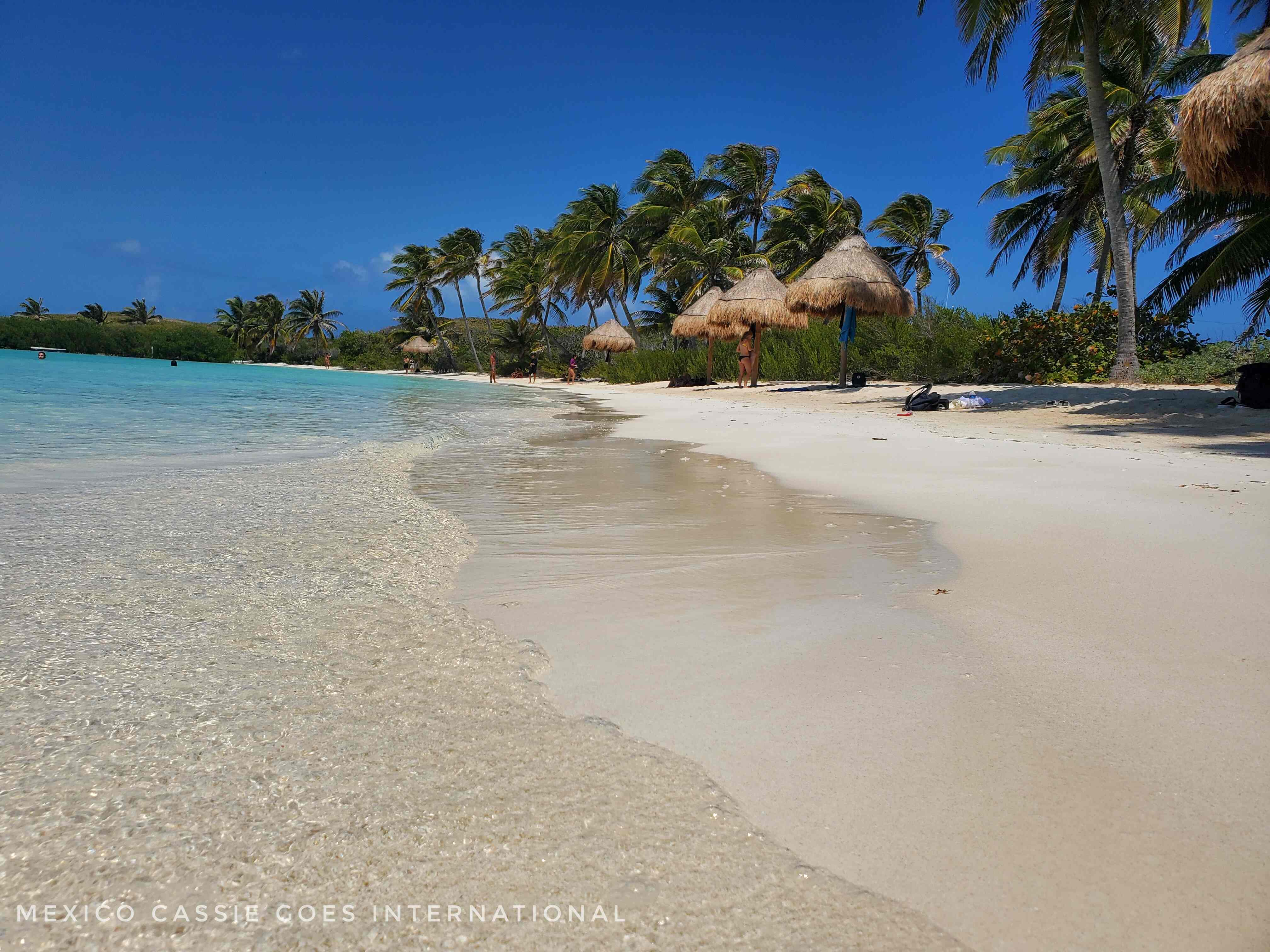
✅ Highlights – take an island day trip to Cozumel, Isla Mujeres or the deserted Isla Contoy. Enjoy diving, shopping on the famous Playa del Carmen’s 5th Avenue or playing on the beach. In Cancun, enjoy Cancun’s excellent beaches, nightlife and beach resorts for all budget. There are two Maya ruins in Cancun, museums, galleries and so much more.
Recommended Reading
⭐️ Outdoor Adventures in Cancun (including swimming with whale sharks, excellent day trips and more)
⭐️ Family fun in Playa del Carmen
Section 6: Playa del Carmen – Tulum (60 km)
Stations – Tulum, Tulum Airport
Stops – Xcaret, Puerto Aventuras, Akumal
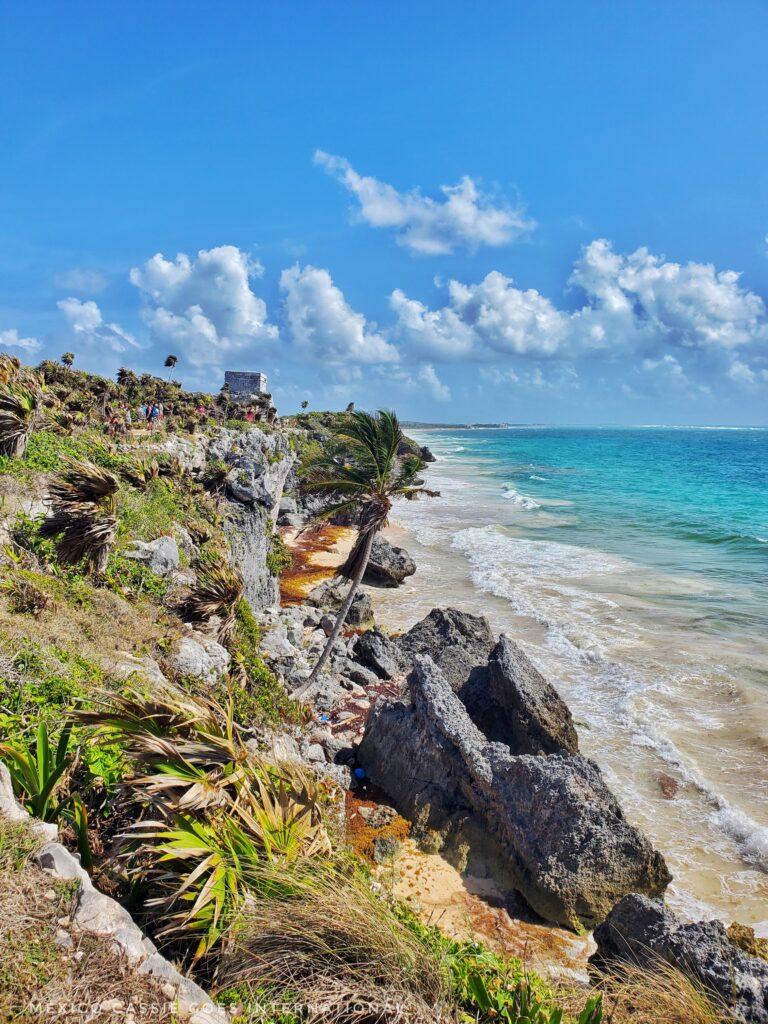
✅ Highlights – Tulum ruins, Muyil ruins, swimming with turtles in Akumal, exploring cenotes, relaxing on the incredible white sand beaches, Si’an Kaan Biosphere.
✅ Visit Río Secreto, an underground river complex, as well as many other adventure parks such as Xcaret.
Section 7: Tulum – Bacalar
Stations – Felipe Carrillo Puerto, Bacalar, Chetumal
Stops – Limones
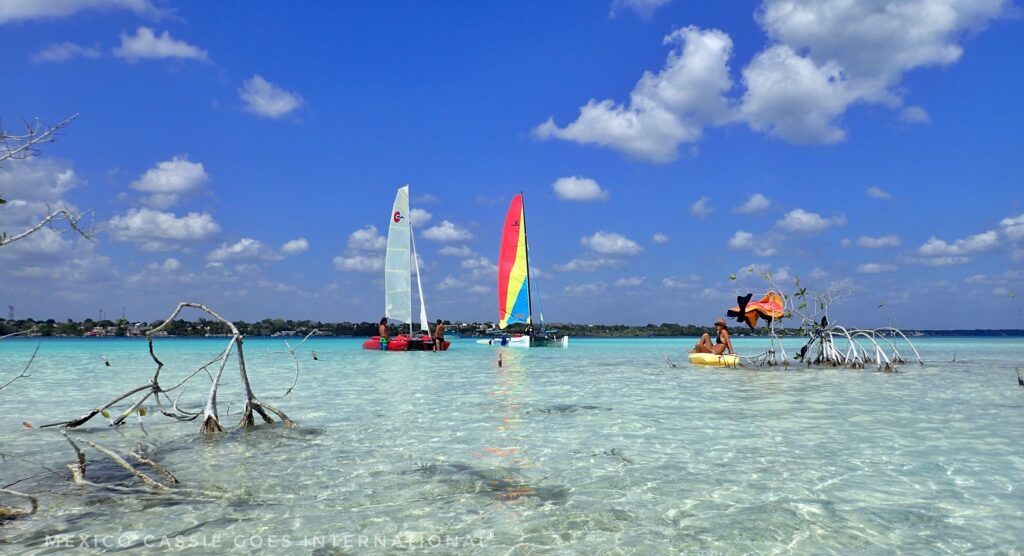
✅ Highlights – Bacalar’s laguna de 7 colores is breathtaking, Canal de los Piratas, swimming in the crystal-clear blue waters of Bacalar.
✅ It’s possible to cross the border into Belize from Chetumal.
Recommended Reading
⭐️ “Are there crocodiles in Bacalar lagoon?” and other great questions
Section 8: Bacalar – Escárcega
Stations – Xpujil
Stops – Conhaus, Centenario
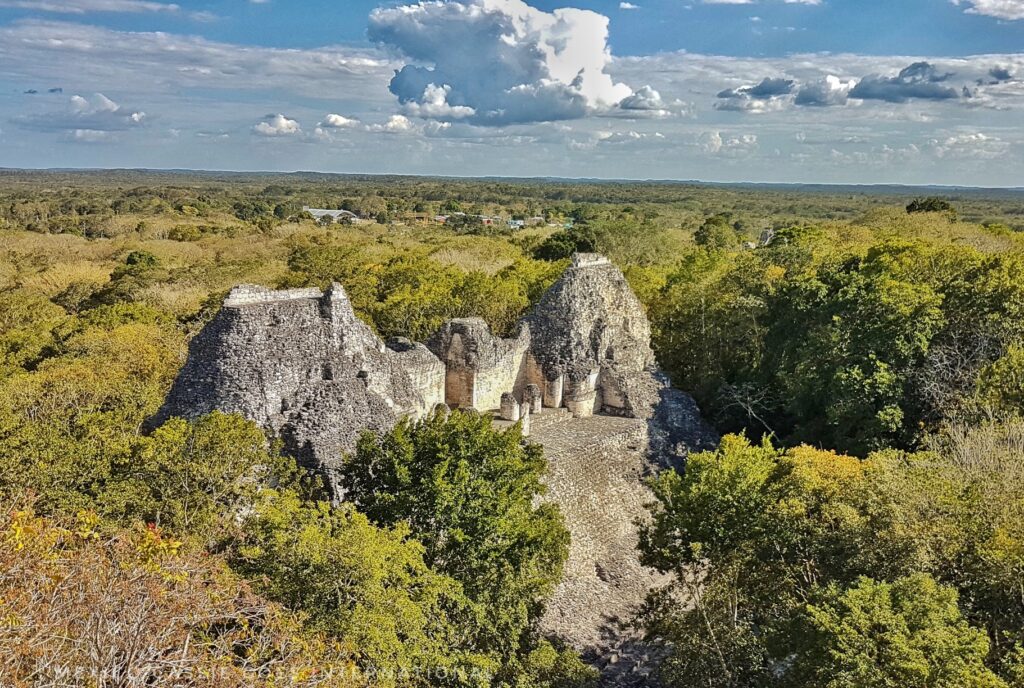
✅ Highlights – a highlight of the entire Maya train route is the Calakmul Biosphere Reserve and the ruins in and around the reserve. Be sure to spend a few days here.
Recommended Reading
Are there other train lines in Mexico?
You may not know it but yes, there are other train routes in Mexico that you can enjoy.
🚂 El Chepe (the Chihuahua Pacifico) runs through the Copper Canyon region of Chihuahua, and Sonora in northern Mexico. It, too, offers tourist trains and local trains.
🚂 Tequila Express / José Cuervo Express – this is a purely tourist experience that transports visitors from Guadalajara to the small pueblo magico of Tequila. It is considered something of a party train since it includes mariachi bands and tequila tastings!
🚉 CDMX has a comprehensive metro service
How to buy Tickets for the Mayan Train Route
💲 Tickets are purchasable via the eticket website. At some point they should be available directly via the website and the Tren Maya app and in person at stations.
💲 Prices vary depending on how far you are taking the train it is said that seniors with valid ID will be able to travel for free.
As of December 2023, a ticket from Cancun – Campeche was $1,166 pesos.
Train Services Along the Rail Route
The point of the Maya train route is both the promotion of tourism and of the local economy. To that end, there will be three different train services running around the route (as far as we know thus far)
P’atal – (from the Mayan ‘to stay’) this is a sleeper train aimed at tourists covering larger distances on the train.
Xiinbal – (from the Mayan ‘to walk’) this is the slowest of the three trains. It is expected to serve locals and those tourists wishing to see the smaller towns of the region. It has a cafe aboard and has large windows to allow great views.
Janal – (from the Mayan ‘to eat’) this is the restaurant train that will offer a large variety of regional dishes to travelers.
When is the best time to visit this region of Mexico?
🔆 Warm and Dry: November – March. The weather is just about perfect for exploring. The nights are considered cool by locals and anyone who has lived here long enough to fully adjust to tropical climes when it drops to 20C / 68F at night.
🔆🔆 Hot: April – May. This is the hottest time of the year. High temperatures are the norm and regularly reach over 40C / 104F. Humidity is at its peak (remember that jungle areas will always be humid)
🔆 ☔️ Hot and Wet: June – September. Most days are extremely hot and humid and there are regular aguaceros (heavy rain storms) for an hour or so in the afternoons.
Why Has There Been Concern Over the Maya Train Route?
No matter how exciting this new train might be we shouldn’t forget that there has consistently been controversy over this Mexican government project since its inception and throughout the period of its construction. Activists are worried about Mexican President, López Obrador’s, pet project and its impact on the environment. It’s true that the pristine wilderness of the Yucatecan jungle has seen big changes during the construction of the railway line. Environmental activists say that fragile ecosystems and wildlife routes across the dense jungle floor have been destroyed. There has also been concern over the possible damage to as yet undiscovered archaeological sites as the ground was prepared for the train line. We must watch and hope that the damage isn’t too severe.
A Final Word on the Maya Train Route
For many there was much doubt that this train line would ever find its way to completion but it does now look as if it will be a reality and a part of the twenty-first century tourist scene of southern Yucatán, opening up new regions and attractions to tourists who might never have had the opportunity to experience some of the wonders of Mexico.
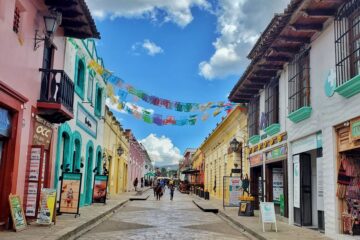
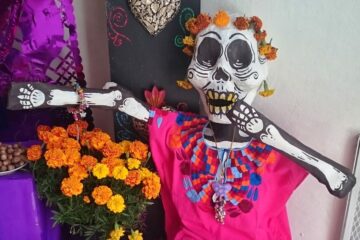
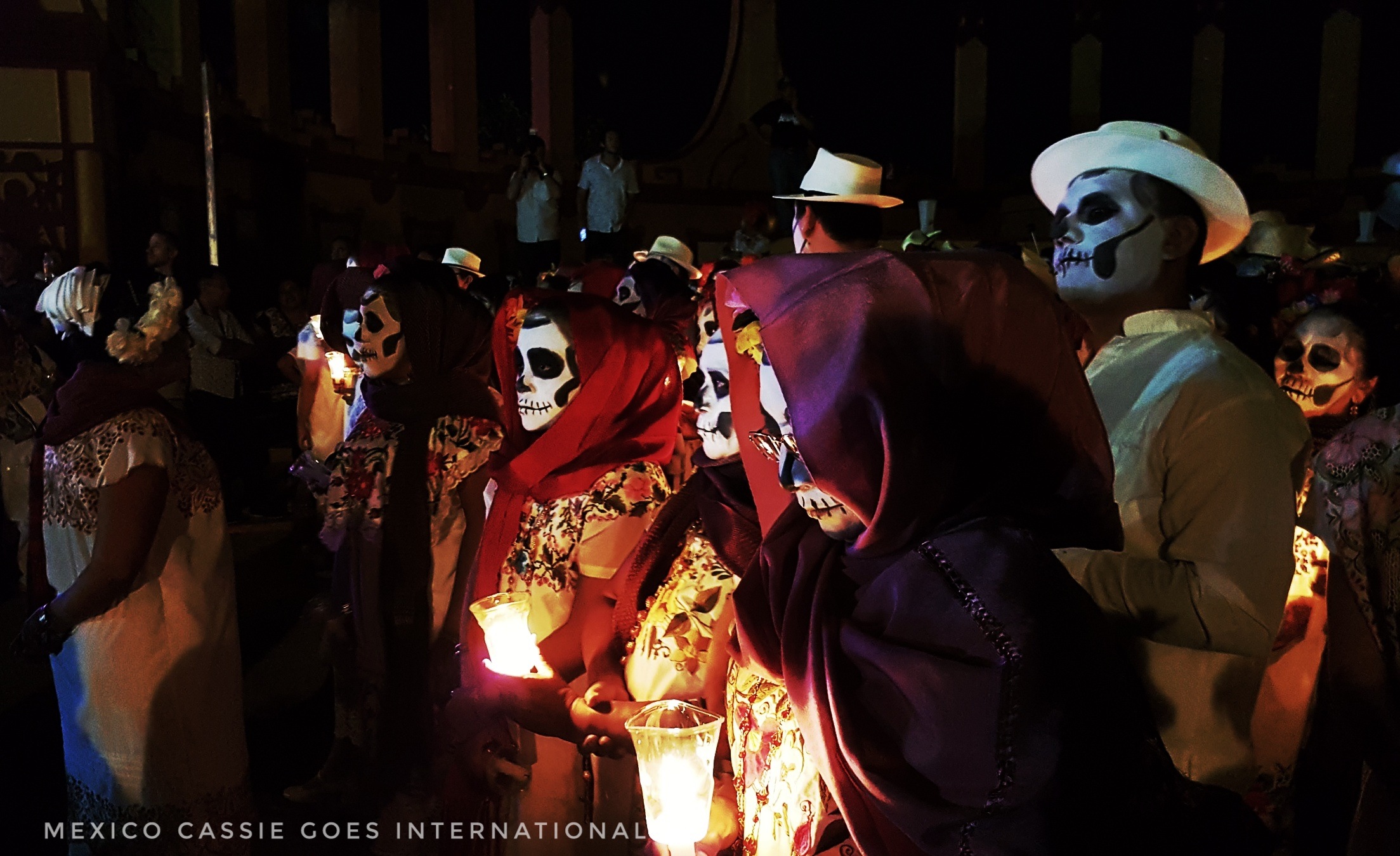
0 Comments